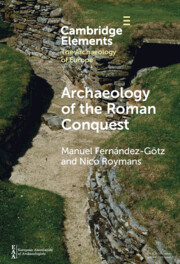Element contents
Archaeology of the Roman Conquest
Published online by Cambridge University Press: 07 March 2024
Summary
- Type
- Element
- Information
- Online ISBN: 9781009182003Publisher: Cambridge University PressPrint publication: 04 April 2024
References
Primary Sources
Secondary Sources
- 4
- Cited by

